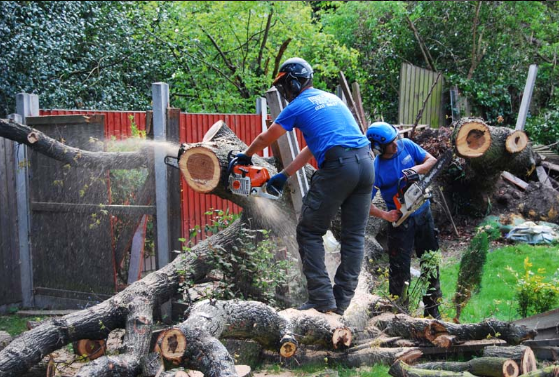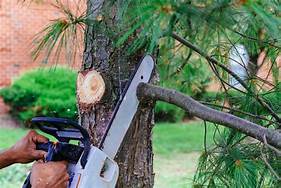Introduction
Planting a new tree is like starting a fresh chapter in your garden’s story. Trees not only add beauty and shade to our outdoor spaces but also contribute significantly to the ecosystem by improving air quality, providing habitats for wildlife, and even increasing property values. However, planting a tree isn't as simple as digging a hole and dropping it in. There are several common pitfalls that gardeners and homeowners often encounter when embarking on this journey.
In this article, we'll explore the Top 5 Mistakes When Planting a New Tree (And How to Avoid Them). By understanding these missteps, you'll be better equipped to ensure the healthy growth of your new leafy friend. We’ll dive into practical gardening tips, essential tree maintenance advice, and some handy garden design tips that will help you create an outdoor oasis that thrives for years to come.
Top 5 Mistakes When Planting a New Tree (And How to Avoid Them)
1. Selecting the Wrong Tree for Your Environment
Understanding Your Local Climate
When choosing a tree, one of the biggest mistakes people make is not considering their local climate conditions. Trees have specific requirements regarding temperature, rainfall, and sunlight exposure. For instance, maple trees thrive in cooler climates, while palm trees prefer warmer regions.
Soil Type Matters
Your soil's composition plays an equally crucial role in https://treeloppingtownsville.com/ https://treeloppingtownsville.com/about-us/ https://treeloppingtownsville.com/contact-us/ tree lopping determining which trees will flourish in your yard. Sandy soils drain quickly but may lack nutrients; clay soils retain moisture but can become compacted easily. To ensure you select the right tree for your environment:
- Conduct a soil test. Research native species that naturally thrive in your area. Ask local nurseries or gardening centers for recommendations.
2. Improper Hole Digging Techniques
The Right Size Matters
Ever heard the saying "you have to dig deep"? Well, when it comes to planting trees, it’s about digging wide rather than deep! The hole should be at least twice as wide as the root ball but no deeper than necessary.
Avoiding Compacted Soil
Compacted soil can hinder root growth significantly. To avoid this issue:
- Loosen the soil around the hole's perimeter. Use a garden fork or tiller if necessary.
By ensuring you provide ample space for roots to spread outwards rather than downwards, you’re setting your tree up for success.
3. Neglecting Water Requirements Post-Planting
Establishing a Watering Schedule
One major misstep after planting is neglecting proper watering techniques. Newly planted trees need consistent moisture levels to establish their roots effectively. A general rule of thumb is:
- Water deeply once or twice per week during dry spells.
Here’s how you can monitor your watering needs:
| Season | Frequency | Duration | |--------------|------------------|----------| | Spring/Summer | Once or twice per week | 30 minutes | | Fall | Once every two weeks | 20 minutes | | Winter | Monthly | 15 minutes |
It’s essential not to overwater either; soggy roots can lead to rot!
4. Failing to Mulch Properly
Benefits of Mulching
Mulching is often overlooked yet serves multiple purposes: it retains moisture, suppresses weeds, and regulates soil temperature. However, many people make mistakes regarding mulching methods.
How Much Mulch?
A layer of mulch should ideally be about 2-3 inches thick and kept away from the trunk of the tree (to prevent rot). Here’s how you can do it correctly:
Use organic mulch such as wood chips or shredded bark. Spread mulch evenly around the base but leave space near the trunk. Refresh mulch annually for best results.5. Ignoring Ongoing Maintenance Needs
Creating a Tree Maintenance Schedule
Once your tree is planted and thriving, ongoing care becomes essential! Many homeowners forget that trees require continuous attention throughout their lifespan.
To keep your tree healthy:

- Regularly inspect for pests or diseases. Prune during dormancy according to our comprehensive tree trimming guide.
Here’s an annual schedule breakdown:
| Month | Task | |--------------|--------------------| | January | Assess overall health | | March | Prune dead branches | | June | Check for pests | | September | Fertilize if needed |
Remember: An ounce of prevention is worth a pound of cure!
FAQs about Planting Trees
1. How do I know which type of tree is suitable for my yard?
Research local climate conditions and consider soil type; consult with local nurseries or check online resources about native species.

2. Can I plant my tree any time of year?
While spring and fall are ideal times due to milder weather conditions, avoid planting during extreme heat or frost periods.
3. What should I do if my newly planted tree appears wilting?
Check its watering schedule first—ensure it's receiving adequate water without being overwatered!
4. Is mulching really necessary?
Absolutely! Mulching helps retain moisture while keeping weeds at bay—it’s beneficial for young trees especially!
5. Should I prune my new tree immediately after planting?
No! Allow it time to establish before pruning; wait until next winter when it's dormant.
6. How long will it take before my new tree grows significantly?
It varies by species but typically takes anywhere from 2-5 years before noticeable growth occurs.
Conclusion
Planting a new tree is an exciting endeavor that can yield beautiful rewards when done correctly! By avoiding these common mistakes—selecting suitable species based on climate conditions, digging proper holes with loose soil around them maintaining consistent watering schedules applying mulch properly while regularly maintaining—you'll set yourself up for success!
So go ahead: embrace those garden landscaping dreams armed with knowledge from this article on Top 5 Mistakes When Planting a New Tree (And How to Avoid Them)! Happy planting!